30 Jan Row House Design: Effortless Guide To The Ideal Budget Home
Row House Design is a straightforward term for designing a row of connected houses with a disciplined architectural framework. It depicts the same design elements like the façade, windows, roofs, compound wall, style of architecture, etc. Row house design was a go-to component of low-cost housing. It has a minimum of three narrow and long units in a row, bringing in a distinct character. The main concept of Row House Design is to have a common shared wall, made especially for a single family. Each unit ensures communal living with ample breathing space. Row houses can be of the single, double, or triple duplex type, depending on the occupancy offered at a place.
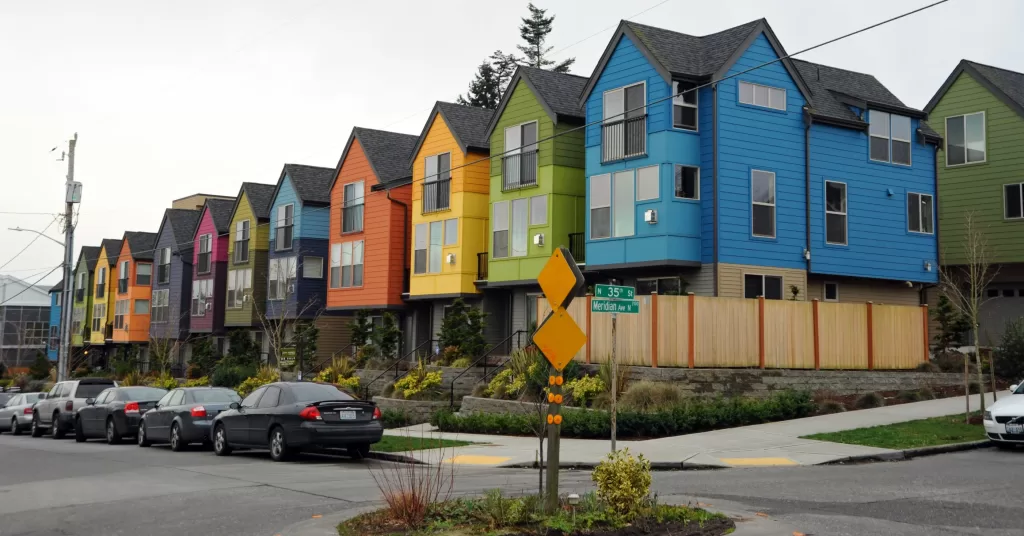
Origin of Row Houses in India:
Row housing was first built in the 16th century in Europe and gained recognition in other countries. This was mainly due to its compact and affordable style. Renowned architect Le Corbusier established the first row house design in India. He did so while fashioning a masterplan for the city of Chandigarh between 1951 and 1956. Luxurious bungalows, small villas, or houses were the segregated type of housing during pre-independence British rule. Apparently, the idea of communal living was unknown during this time. However, with the population broadening post-independence, tall apartments came into light to accommodate the same. Row house design in India is highly appreciated for its convenience and economic importance.
Advantages:
- For first-time home buyers, this is a suitable affordable option, as Row houses are often economical than single-family housing.
- Comparing with apartments or condos, the square-foot area is larger, without being charged more, which gives value for the money.
- Having one’s own space in a communal living locality gives one privacy, while still being connected.
- The same amenities which are generally available in apartment complexes is also easily accessible in row house designs.
- Ease of maintenance in terms of back & front yard, along with maintenance cost being shared by the owners.
- Sustainable home as the same occupants utilizes lesser ground, as with a single-family home.
- Range of lifestyle, with choice of selecting a luxurious row house to a simple one. It caters to people on all walks of life, are available in present times.
- Minimized construction cost, as the designs are uniform, with slight modifications based on the client’s desire.
- Generally located in areas where all facilities and opportunities are in proximity.
Disadvantages:
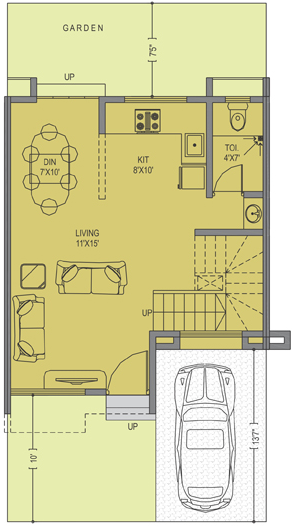
- Housing architectural typology is of a uniform style, therefore not distinguishing a unique single home.
- Restricted amount of natural light due to shared walls, unless designed keeping these factors in mind.
- Attached garages is not usually seen in row housing, which could be a walk from the parking area.
- Can be in the outskirts or suburban area, even with facilities, so commute to the main city area could be problematic.
- Landscape area is minimal for people with interest of brightening up the area with natural elements.
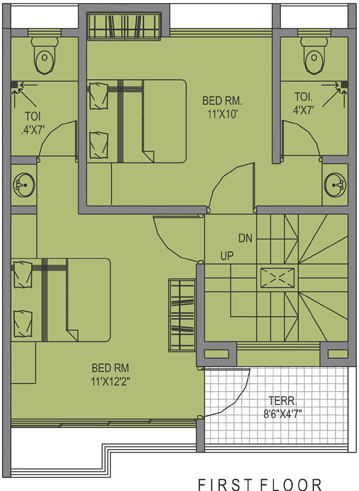
Things to Remember While Designing a Row House
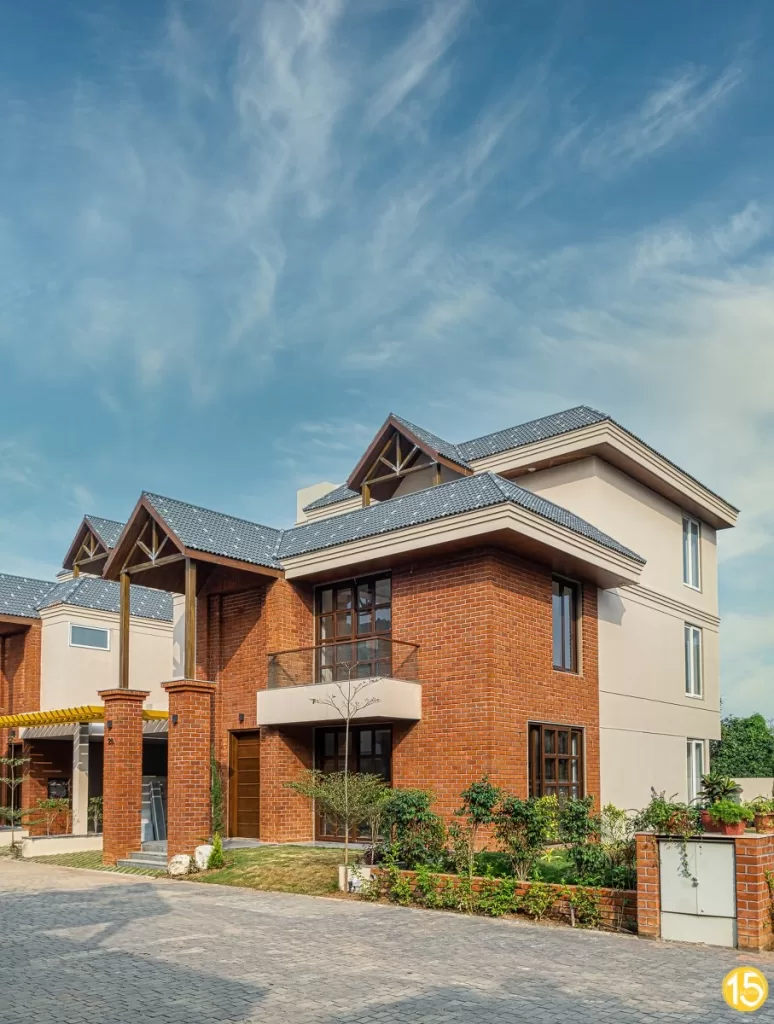
Ample space:
As the concept is generally narrow and long, ensure to make it feel spacious in the design planning stage.
Lighting & ventilation:
Shared walls and uniformity in play with the right orientation of the building and location of openings is crucial for ambient living conditions.
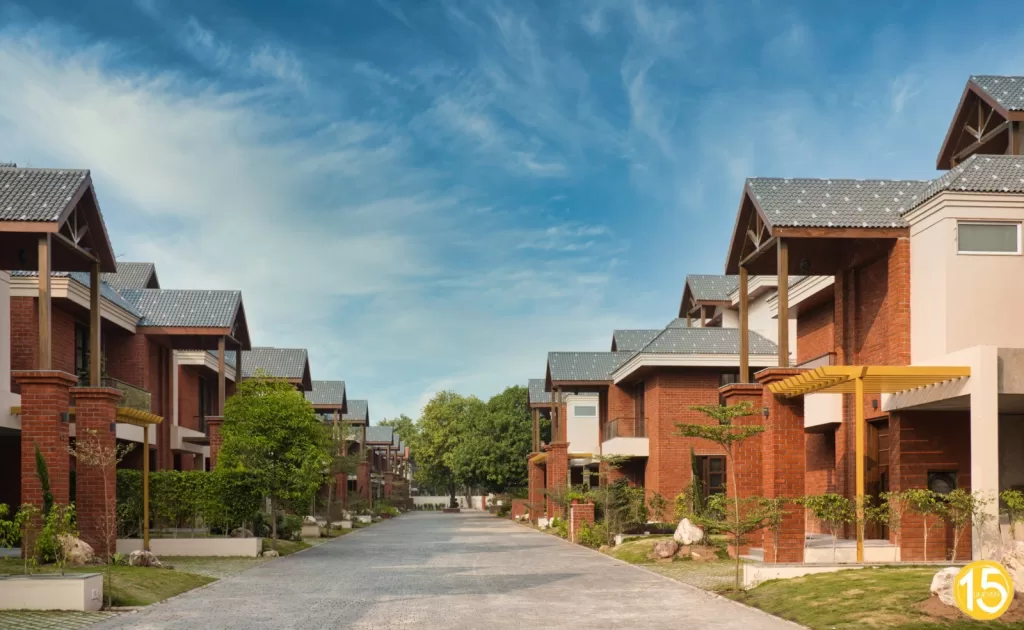
Typologies –with uniform design, various types can be giving as an option to the buyer, where different parts of a unit can be modified, to give a chance of standout even in similarity.
Interior style – the beauty of an interior can be made completely to suit the home buyer and give its distinct appeal, even with the exterior being the same.
Efficient land use – curation of making the best use of a design in lesser space.
Landscape inclusive – nature always brightens up a built space, hence inclusivity of plant material is imminent, also adding value to the place.
Parking facility – houses can be designed to include at least one vehicular parking, for sale value.
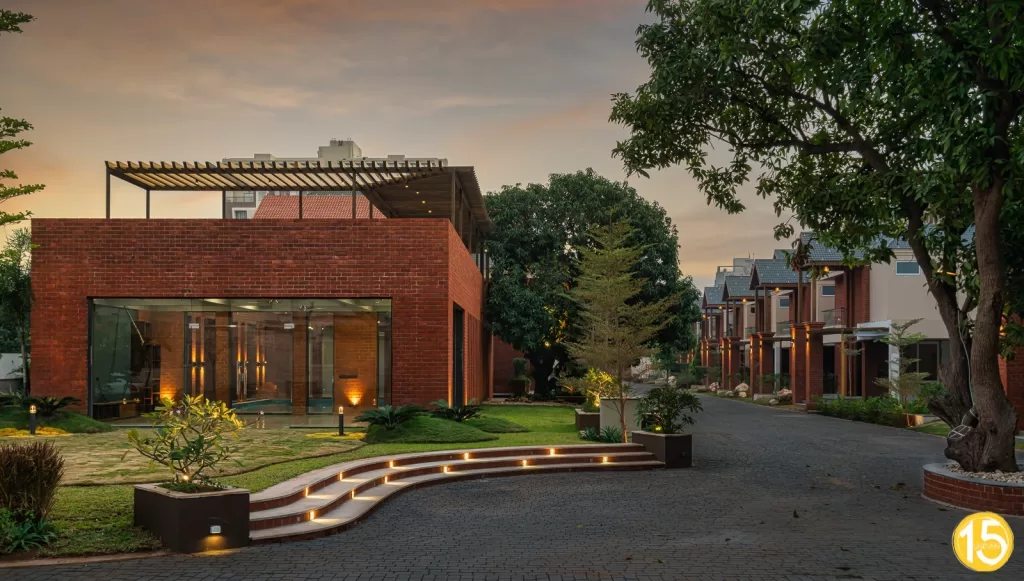
- Amenities – location of grocery stores, medical shops, clubhouses etc, should be in close proximity to the housing.
- Privacy – even with a shared wall, ensuring side facades are secured well with perforations, to add an aesthetic feel as well seclusion.
- Future Development – to be verified beforehand around the locality, as this factor to affect the value of the housing and neighbourhood.
- Resale value – understanding the appreciation and awareness of the history of row housing in the region, aiding in long-term investment plans and designs.
- Security – designs should be safe from any people-based problem, in terms of grills for openings, sturdy doors, heights of compound walls etc.
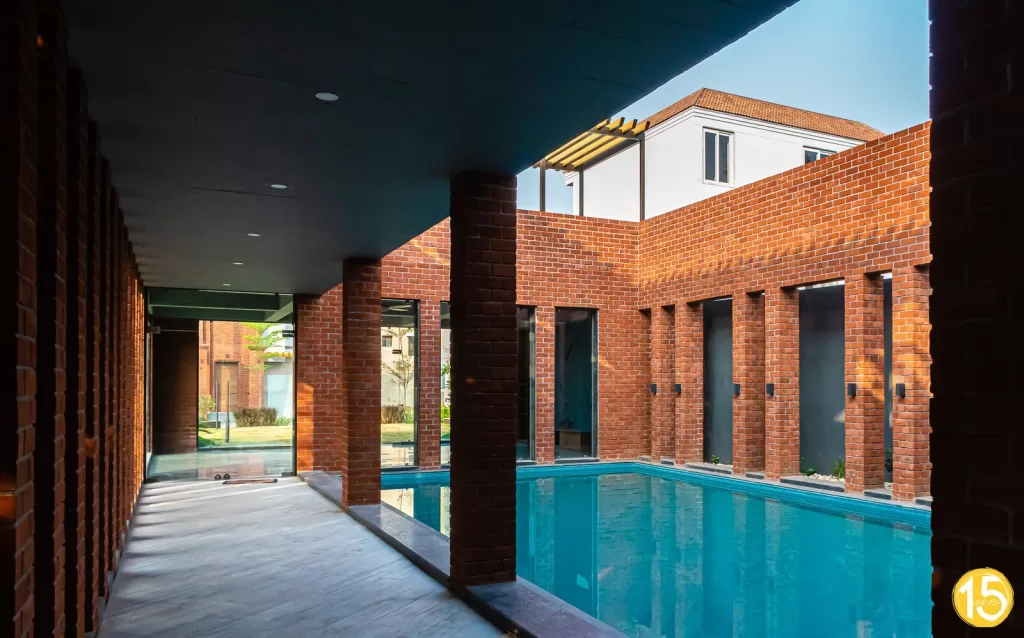
Summary:
In its inception, row house design was considered mainly for middle-class families, but with time, row housing has gained importance, especially in the real estate industry, providing vast options for all statuses. With units curated to different styles of architecture, from Victorian speaking of high-pitched roofs and stained-glass windows to Georgian exuding brick structures and wide windows of two to three storeys in height to Greek style showcasing its classic pediment and columns in the porch, row house design is a classical example of giving architecture its importance. To buy a row house, it is important to understand its fundamentals, history, benefits, and disadvantages to start with. Pricing, especially in India, for row house designs can vary from Rs. 10 lakhs to 30 crores, depending on the square footage, detailing, location in a particular city, etc.
Row house design speaks of the purity of community gatherings of ancient times, where one respects the space of an induvial and is there together in times of need. In the modern era, with the population larger than ever before, people prefer community living as it gives a sense of comfort and connection in this fast-paced world. Row house design in India is a middle ground when choosing between apartments and bungalows, contributing the confined space and lavish nature in one, respectively.
Content Writing And Research By: Ar. Disha Shetty
The post Row House Design: Effortless Guide To The Ideal Budget Home appeared first on The Architects Diary.




No Comments